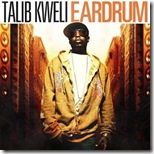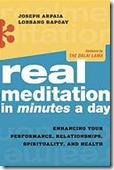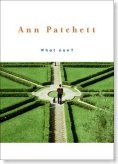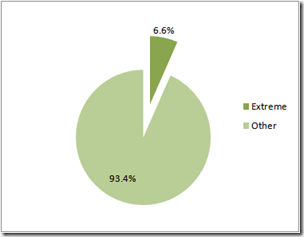"How do we deal with the stains of our own history? How do we take those aspects of our social history, slavery being the largest one, that we have a democratic country that was founded and based in slavery, and how do you talk about that?"
~ Ann Hamilton, from Art:21
Ann Hamilton describes myein, her installation representing the US at the 48th Venice Biennale in 1999, in the following excerpt from "Histories that Haunt," by Mary Katherine Coffey (Art Journal, Fall 2001):
I took this project very seriously and really thought about how a work can explore some of the absences that are in our historical record, or that are pervasively present, but in some ways invisible to us. Can material form be a way of looking? When I first visited the pavilion in Venice, I thought, "This neo-classical form is every bank in Iowa." This is an American form, and it sent me straight into the arms of Thomas Jefferson at Monticello. And yet the building is almost a scale model. When you get in, the facade is not fulfilled by the experience and the volume of the inside. So very early on, I decided that I wanted to take on the building as both an object and subject of the work, to make a work that was both inside and outside of the building. The first gesture of the work was to empty the space, to open the skylights to light for the first time in some fifteen years, and to make alterations architecturally that then embed the work in the structure of the building. The glass wall [in front o f the pavilion] served to distort the view into the building as well as the view out. The glass changed and liquefied the solidity and the authority of the kind of architectural history that you are looking at when you approach the pavilion.
When you first walked in and entered the small rotunda, there was a blind window that had been revealed. It was one we found as we went into the membrane of the building. It didn't offer a view back out, but rather a reflection of your backlit shadow, as you entered. You could then turn any direction within the rotunda to enter an L-shaped configuration of consecutive galleries, two on each side, each one the same, each treated the same except for the change in light.
On the walls was a text--Charles Reznikoff's Testimony: The United States 1885-1915--translated into Braille. It's a two-volume work that is based on his research in the thirties on court records from the turn of the last century. Intensely colored fuchsia powder was falling around the perimeter of each of the rooms, catching, rolling, falling off the Braille text and then accumulating on the floor. The voice that you heard was my reading of Lincoln's Second Inaugural Address in international phonetic code. So if you walked the landscape of the interior of the room and wrote out the letters that you were hearing, you would transcribe the text. Both of the references to language, in Braille and phonetic code, are veiled in such a way that language doesn't become the vehicle through which you arrive at a certain set of information. And so you had to sense your way through this.
A table, the only object in the piece, stood at the exterior and was knotted with white cloth at its surface. In part, it was an homage to my own textile heritage and sensibility, in that tying a knot in a piece of string or cloth was one of the earliest forms of record keeping. The system of government we have is based on legalistic structure. So the record-keeping reference is here in material form.
Excerpt from Testimony: The United States, 1885-1890
by Charles Reznikoff
Several white men went at night to the Negro's
house,
shot into it,
and set fire to his cotton on the gallery
his wife and children ran under the bed
and as the firing from guns and pistols went on
and the cotton blazed up, ran through a side door
into the woods.
The Negro himself, badly wounded, fled to the
house of a neighbor—
a white man--
and got inside.
He was followed,
and one of those who ran after him
put a shotgun against the white man's door
and shot a hole through it.
Justice, however, was not to be thwarted,
for five of the men who did this to the Negro
were tried:
for "unlawfully and maliciously
injuring and disfiguring"-
the white man's property.
 "When I'm critical of the art form, I do it within the art form. I make the songs that can be the examples for how we can do it. I try not to be too critical of artists expressing themselves, but I try to express myself to show the balance, so there's a different way you can do it...It's not the artist's job to be politically correct or morally upstanding, it's the artist's job to be honest with how they express they self. At some times, an artist being less moral makes them a better artist and that's the messed up thing about art, that sometimes you can have real jerks create great art and you just gotta deal with it."
"When I'm critical of the art form, I do it within the art form. I make the songs that can be the examples for how we can do it. I try not to be too critical of artists expressing themselves, but I try to express myself to show the balance, so there's a different way you can do it...It's not the artist's job to be politically correct or morally upstanding, it's the artist's job to be honest with how they express they self. At some times, an artist being less moral makes them a better artist and that's the messed up thing about art, that sometimes you can have real jerks create great art and you just gotta deal with it."

 "The particular dark reflecting pool that literature presents to us quite possibly has no purpose at all, any more than great music does. The pointlessness of art is not an argument against it. It is simply a proposition that pragmatists worry over. Consequently, as a way to stave off pointlessness and the specter of a profitless activity, we—Americans particularly—tend to moralize and pragmatize the practice of literature. We sometimes try to avoid in our own writing and reading what me may find troubling in our lives. But what is good when encountered in life is often not good for literature, and the reverse: what's good for fiction is not always good when instrumentalized in life.
"The particular dark reflecting pool that literature presents to us quite possibly has no purpose at all, any more than great music does. The pointlessness of art is not an argument against it. It is simply a proposition that pragmatists worry over. Consequently, as a way to stave off pointlessness and the specter of a profitless activity, we—Americans particularly—tend to moralize and pragmatize the practice of literature. We sometimes try to avoid in our own writing and reading what me may find troubling in our lives. But what is good when encountered in life is often not good for literature, and the reverse: what's good for fiction is not always good when instrumentalized in life. 
 It’s both more there and less there than normal human experience. Therefore it's a kind of todo and a kind of nada, a kind of completeness and a kind of nothingness at exactly the same time. Which sounds paradoxical, sort of ridiculous actually, logically speaking.
It’s both more there and less there than normal human experience. Therefore it's a kind of todo and a kind of nada, a kind of completeness and a kind of nothingness at exactly the same time. Which sounds paradoxical, sort of ridiculous actually, logically speaking.  Every brilliant experiment, like every great work of art, starts with an act of imagination.
Every brilliant experiment, like every great work of art, starts with an act of imagination.  Myth 1: Meditation is Eastern.
Myth 1: Meditation is Eastern.

 "Light has the ability to reveal the many layers, the myriad faces contained in each form. Most often, we tend to see just the surface of a subject. We name it, identify it, and forget about it. And we stop seeing. Yet when the light changes, the subject changes, and what the subject has to show us changes. Unless we are ready to be patient and sit with our subjects, allowing the light to transform them, we see little more than their superficial aspects, and our lives reflect that shallowness. If we are patient, letting go of thoughts, and letting the mind settle down, then the hidden faces rise to the surface, and subtlety and richness return. A shift takes place, resonance appears. This allows for real intimacy with the subject."
"Light has the ability to reveal the many layers, the myriad faces contained in each form. Most often, we tend to see just the surface of a subject. We name it, identify it, and forget about it. And we stop seeing. Yet when the light changes, the subject changes, and what the subject has to show us changes. Unless we are ready to be patient and sit with our subjects, allowing the light to transform them, we see little more than their superficial aspects, and our lives reflect that shallowness. If we are patient, letting go of thoughts, and letting the mind settle down, then the hidden faces rise to the surface, and subtlety and richness return. A shift takes place, resonance appears. This allows for real intimacy with the subject."


 "There were no formerly heroic times, and there was no formerly pure generation. There is no one here but us chickens, and so it has always been: A people busy and powerful, knowledgeable, ambivalent, important, fearful, and self-aware; a people who scheme, promote, deceive, and conquer; who pray for their loved ones, and long to flee misery and skip death.
"There were no formerly heroic times, and there was no formerly pure generation. There is no one here but us chickens, and so it has always been: A people busy and powerful, knowledgeable, ambivalent, important, fearful, and self-aware; a people who scheme, promote, deceive, and conquer; who pray for their loved ones, and long to flee misery and skip death.  was alive again and possessing the beauty of youth, aware
was alive again and possessing the beauty of youth, aware

 [While
[While  "Establishing lasting peace is the work of education; all politics can do is keep us out of war."
"Establishing lasting peace is the work of education; all politics can do is keep us out of war."



